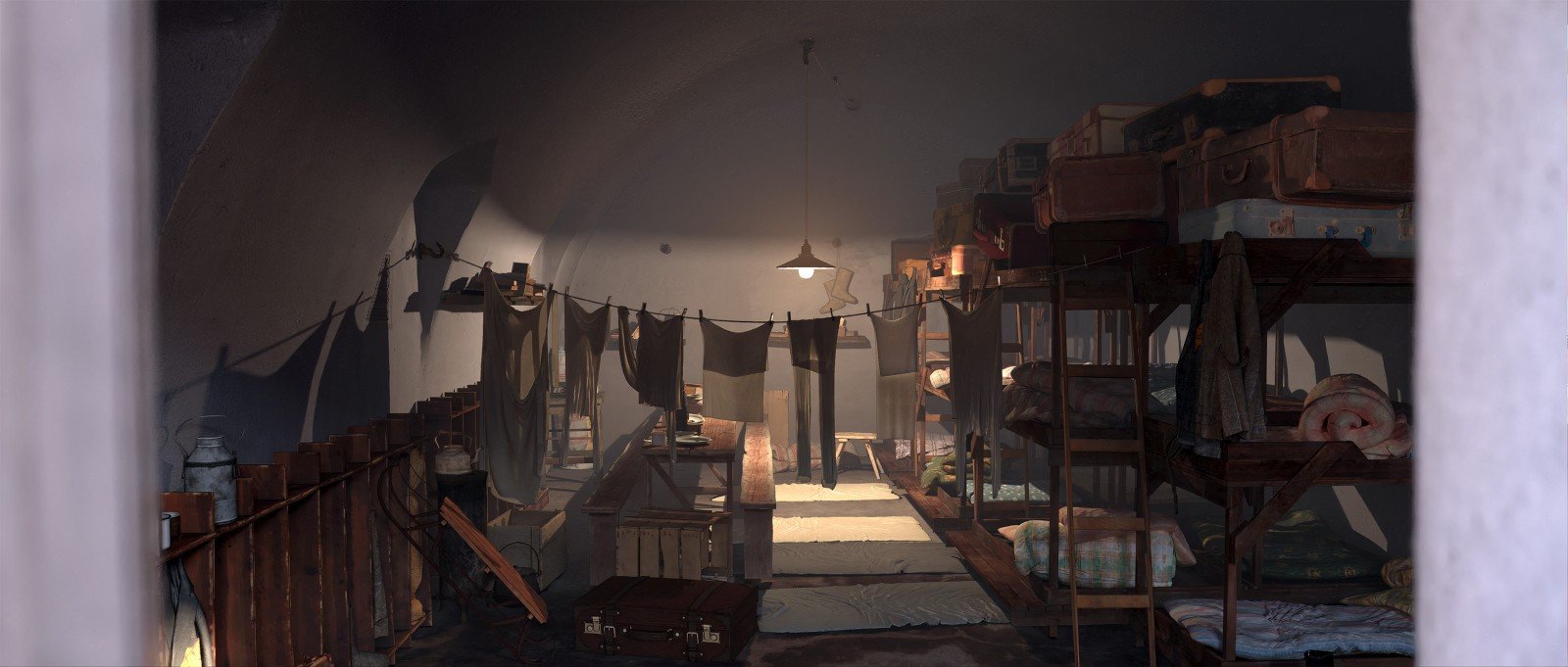Audiovisual art will appear beyond the screen
This year, the Virtual Reality section will once again present the latest spatial works depicting real stories or characters, creating immersive documentary experiences. The offerings will include both interactive installations and 360° films presented in a VR cinema. The unifying theme is journeys and migrations - ranging from mythological pilgrimages to contemporary humanitarian, economic, and climate refugees.
At this year's IDFF Ji.hlava you can immerse yourself in six interactive installations, i.e. works that you can actively enter and explore in your own way. You’ll also be able to influence their appearance and development, and we’ll also re-open our classic VR cinema, showing four new 360° films, with the audience watching the same linear programme at the same time.
Strong themes in this year's VR programme are wandering and great moves: the migration of populations from ancient times, through the myths of the pilgrimages of ancient Taoist deities and the massive displacement of people in different historical periods for wars, land or trade, to contemporary humanitarian, economic and climate refugees (for example, the visually sophisticated work Eternal Walkers).
“The complexity of the perception of time in our everyday livfe can be reflected in a spatial work.”
Impressive and thought-provoking, Shadowtime also develops the motif of escape as a result of the effects of the climate crisis while conceptually working with the perception of time and the necessity for multiple perspectives: Shadowtime is the phenomenon of thinking in several layers of time, or rather several ways of looking at something simultaneously. For example, we’re driving somewhere in a car and, in addition to the time spent driving, we’re also aware that we’re consuming fuel that has been created from a mineral resource that is millions of years old. The complexity of the perception of time in our everyday life can be ingeniously reflected in a spatial work. In both Eternal Walkers and Shadowtime, we observe layers of time sometimes behind us, sometimes beside us, here below us, there above us. The movement through the work thus simultaneously enhances the experience of this combined temporality.
The Czech representative in the competition of VR works is Ondřej Moravec and Victoria Lopukhina's Fragile Home, depicting the idea and images of home for people affected by the war in Ukraine. The visually compelling work also explores the consciousness and feeling of home through the fusion of virtual and physical space: the site of the experience is a room where the viewer can sit on a sofa, perceiving its space with a window and furniture. Murals also take us to Ukraine – we are brought closer to Banksy's works on the ruins of this war-torn country’s buildings and roads.
The German work The Lost Time follows a Holocaust survivor and her search for family members. We can also enter the everyday life of three Lebanese boys (Dreaming of Lebanon). An immersive event outside the competition will be the famous work The Deserted (2017) by Taiwanese director Tsai Ming-liang.
"Interactive documentaries aim to draw the audience directly into the events, stories, or emotional world of current and past events."
In this year's selection of films and installations in the VR zone, we can see how sophisticated and consistent animation techniques are in spatial works (Shadowtime and Eternal Walkers), how they connect us, disorient us, leave us groping and searching, and play with the perception of space (Fragile Home, The Deserted). Interactive and spatial documentaries that seek to draw the audience directly into the action, stories or emotional world of current and past events also allow us to observe how the mode of representation and narrative in spatial works evolves and what aesthetic innovations the artists are experimenting with.
In the Game Zone, we regularly map games that involve the collaboration of a large number of people in scientific research. Crowdsourcing projects instruct the user to search for, sort, tag or create certain elements, thereby helping to sort, tag or add to the large amount of data needed for particular research. So-called crowd science has been a trend for more than two decades, and Ji.hlava has featured some of the key games in this genre in the past: for example, Fold It, which uses a form of jigsaw puzzles that the player uses to create prototypes of protein structures while learning about how proteins look and function.
This year, we’re featuring Glyph, a game that explores the shapes and forms of letters in different scripts, created by the Max Planck Society. The Great Brain Experiment is based on neuroscience research into how the brain works. In four parts focusing on different functions, it teaches the player how the brain works while also contributing data on how brain function changes with age.
In the documentary games this year, male and female players can explore the worlds of Kafka's books The Trial, The Castle and Letter to His Father in the thoughtful Playing Kafka through branching stories and atmospheric puzzles. AI People allows you to create characters whose stories are invented by the AI itself, or to assign your own scenarios and observe artificially thinking “people” in them.
"The youngest generation of video game creators is exploring original approaches to both visuals and sound."
The historical game Last Train Home was developed through extensive research and collaboration with historians and the Czechoslovak legionnaire community, and features Czechoslovak soldiers on a mission in the harsh Siberian landscape forced to traverse war-torn territory. The game is based on the experiences of legionnaires returning to the newly formed Czechoslovakia after World War I.
Like every year, we’ll be presenting new talents in the field of video game development once again in the Game Zone: students of the Game Design Department at FAMU in Prague and the Game Studio at FaVU in Brno are developing impressive and aesthetically innovative prototypes – here you can see where the evolution of the game industry in the Czech Republic is headed, what the youngest generation is exploring in terms of new forms of game worlds and mechanics and original approaches to visuals or sound, and also what topics they’re interested in working on in regard to games.






